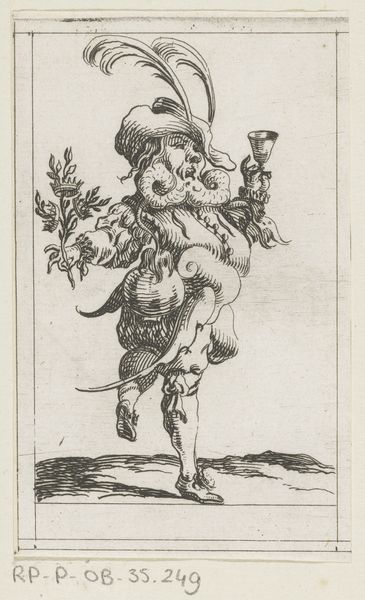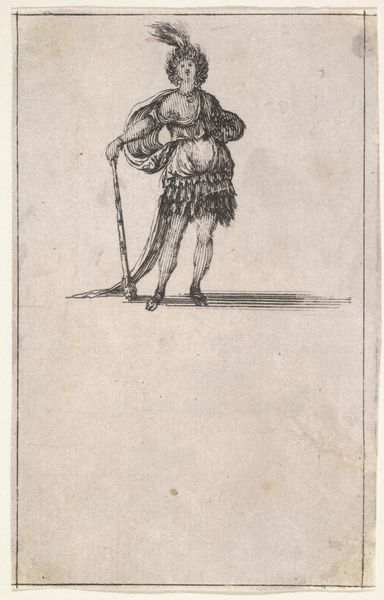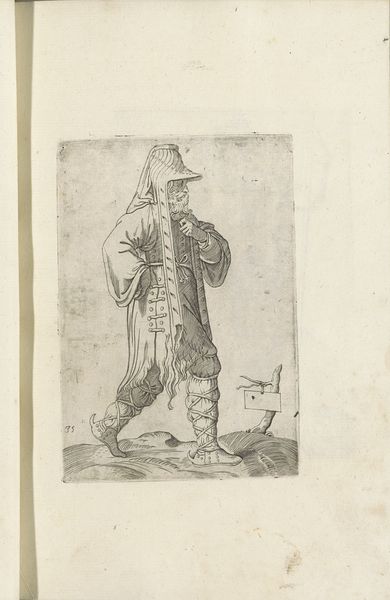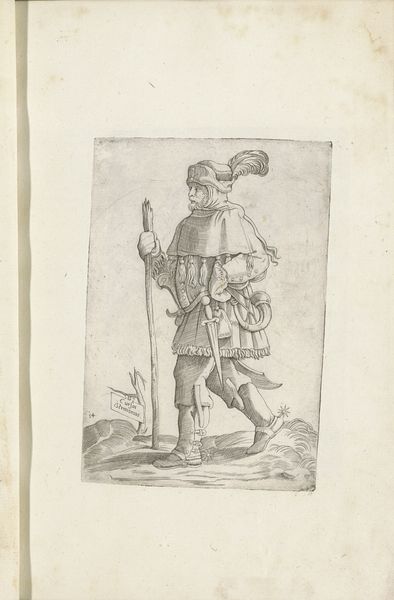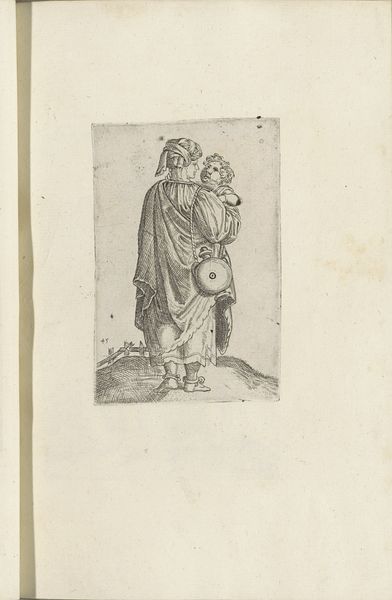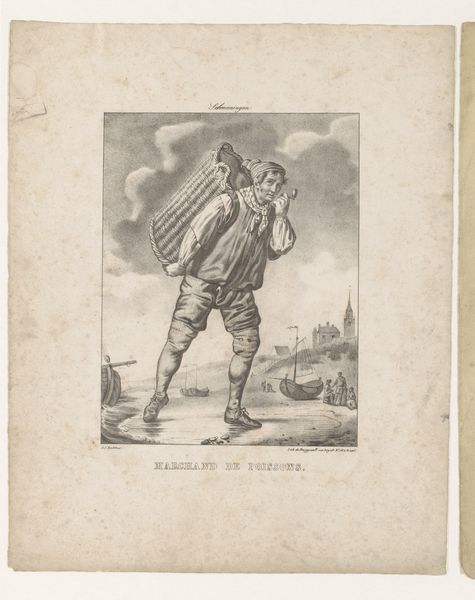
drawing, pencil
#
portrait
#
drawing
#
toned paper
#
light pencil work
#
quirky sketch
#
pencil sketch
#
sketch book
#
figuration
#
11_renaissance
#
personal sketchbook
#
sketchwork
#
pen-ink sketch
#
pencil
#
sketchbook drawing
#
history-painting
#
northern-renaissance
#
sketchbook art
Dimensions: height 265 mm, width 195 mm, height 150 mm, width 105 mm
Copyright: Rijks Museum: Open Domain
Curator: This fascinating pencil drawing, "Duitse Soldaat," created in 1569, can be found in the Rijksmuseum. It’s attributed to Ferando Bertelli. Editor: It has a sort of quirky charm, doesn't it? Almost like a doodle, a quick observation jotted down in a sketchbook. But there’s also an intensity to the detail in his outfit. Curator: Absolutely. The northern Renaissance was marked by meticulous detail, yet here the materials—pencil on toned paper—hint at a process rooted in preliminary sketchwork. It wasn't intended as a standalone work, rather a study perhaps related to military manufacturing in this era. Editor: Yes! Like a preparatory drawing. Imagine him sketching furiously in the margins of something, or while waiting on set for a painting commission, his charcoal catching the essence of the textures, the weight of his arms holding the rifle, the feathered cap—almost like the flourish of a signature. Curator: Consider the historical context. This drawing appears in a period rife with militarization and changing notions of the very structure of early-modern armies, from how their uniform looked to the labour division within those troops. Bertelli isn't just drawing a soldier. It's an attempt at a realistic capture of what those social dynamics are in reality. Editor: The weight of history on him; almost too heavy. Perhaps he did understand the implication of what he was drawing back then, the sense of duty of soldiers towards something... that at that stage would still have been so much like the idea of nothingness, no state nor homeland yet. I feel strangely sentimental and detached by him carrying everything, walking steadily, in spite of it all. Curator: It does make you reflect on the material realities and even labor that supported these individuals who appear prominently in paintings, shifting our gaze towards previously obscured narratives of production and consumption around soldier's garments and goods in the early-modern Europe. Editor: I think I understand better, the weight carried in him. And what before just felt like the flair of feathery decoration turns almost unbearable now: to have all the vanity loaded, just by belonging in someone else's dream... a nation-state he wouldn't even see in full bloom. A society where only those capable to consume and materialise these goods can even paint them at such scale! Curator: Seeing Bertelli’s "Duitse Soldaat" has made me consider the unacknowledged labour behind historical displays of military power even further than usual, and question traditional art historical narratives even further Editor: Agreed. This little sketch has brought a certain clarity through the lens of history and individual pathos. It goes to show what treasures are hidden among even what appear like simple notes from our most human makers.
Comments
No comments
Be the first to comment and join the conversation on the ultimate creative platform.
